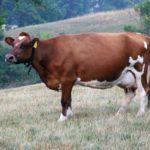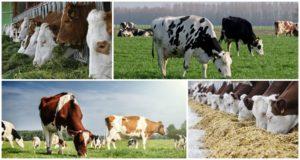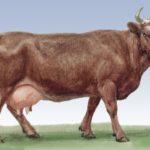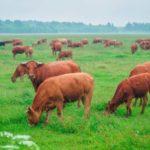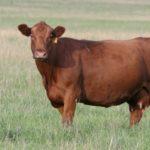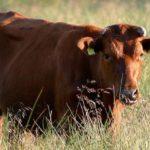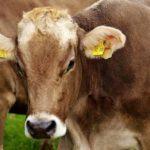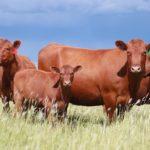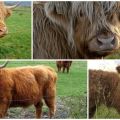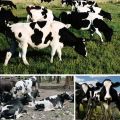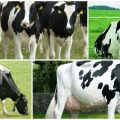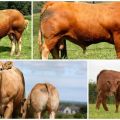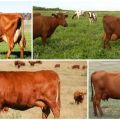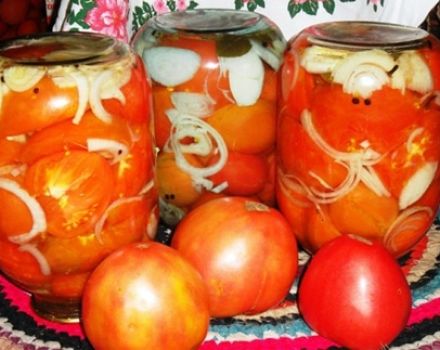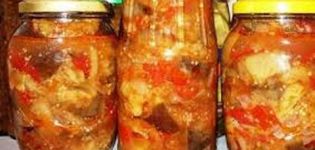Description and characteristics of cows of the Bestuzhev breed, keeping rules
The history of the Bestuzhev breed of cows dates back to the 18th century. As a result of selection, a hardy, disease-resistant animal was obtained. Red Bestuzhev cows are perfectly adapted to the harsh continental climate of the Volga region, and today they are often found in private farmsteads and large livestock complexes in Bashkiria, Tatarstan, and the Middle Volga.
Description and breed standard
Dairy and meat cows were bred as a result of crossing the Dutch black-and-white breed and Shorthorns brought to Russia with local Volga cows. The landlord Boris Makarovich Bestuzhev was engaged in breeding on his own estate in Bolshaya Repyevka, Simbirsk province (now Ulyanovsk region). As a result of the work, a strong, resistant to many diseases and unpretentious breed appeared, perfect for local conditions.
Description and characteristics of the Bestuzhev cows:
- Large animals, from auburn to almost cherry shade. There may be white spots on the belly and legs.
- A small head with widely spaced white horns.
- Short neck with folds of skin.
- The animal has a straight back and a large raised sacrum.
- A wide chest with a girth of 194 centimeters, a dewlap stands out.
- Height at the withers - 130-135 centimeters. The weight of a cow is up to 600 kilograms, of a bull - 850-950 kilograms.
- The legs are short and strong.
- The udder is not large, bowl-shaped with wide apart nipples.
Bestuzhev cows give less milk than purebred dairy cows, but this is more than offset by the quality of the product. Milk with a fat content of 3.8-4.0%.
Pros and cons of Bestuzhev cows
Russian breeding animals easily adapt to difficult conditions.
Bestuzhev cows rarely give birth to calves with malformations, are able to gain weight well on roughage, and are picky about pastures.
Maintenance and care rules
The breed does not require special conditions of keeping.It tolerates heat and frost well, easily adapts to temperature changes.
Summer playground
It is equipped for free walking of animals in the summer during the daytime. The area is calculated so that each cow has 15 square meters. A strong fence is required on the site so that animals cannot jump over or break it. A gate is placed to enter.
Additionally, the site is equipped with a canopy for resting animals from the summer heat, feeders and drinking bowls.
The floors on it must be flat, an earthen area without pits and bumps is permissible so that the animal is not injured. Set up a walk on the south side of the barn to protect animals from the wind. Bestuzhev cows can withstand heat up to + 27 ° C without stress.
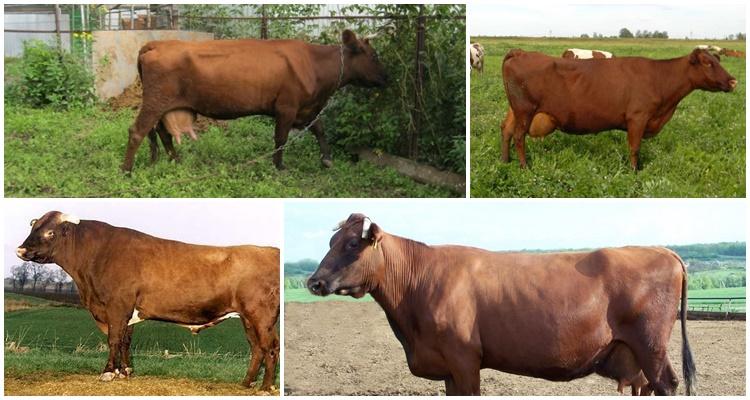
Barn arrangement
The room for animals is made warm and light, the floors are made even, with a slight slope for urine drainage. Ventilation is required in the barn to eliminate moisture. Feeders and drinkers are mounted at a height of 30 centimeters from the floor and equipped with high sides so that the food does not crumble, water does not spill. Containers must not have sharp corners, otherwise animals may get hurt. In the barn, separate corrals are provided for the bull, calves and sick animals. Feeders and drinkers are made of materials that are easy to clean. Straw is used as bedding.
Conditions of detention
For livestock to be strong and productive, nutrition must be balanced, include vitamins and mineral supplements. Systematic veterinary examinations and routine vaccination of animals are mandatory. Cows are brushed daily with a stiff brush, and especially dirty areas are washed with water. This is done 1-1.5 hours before milking. In stalls, they are tied tightly, not allowing the rope or chain to injure the animal.
At each milking, the udders are washed with soap, wiped dry, lubricated with cream and massaged. These actions are necessary to protect the animal from disease. Bestuzhev's cows overwinter in the barn. If the frosts are not too severe, they are taken out for a walk for 1-2 hours daily.
Regular cleaning of the stall and equipment
Straw is used as bedding. It changes as it gets dirty. Manure should be removed daily, preferably 2 times a day. With the accumulation of ammonia excreted in urine and manure, indoor humidity and the risk of cow disease increase. Drinkers are rinsed daily, clean water is used to water the cows. Once every 3-5 days, feeders and drinkers are treated with a hot 2% baking soda solution for disinfection.
Feeding and watering animals
Bestuzhev's cows are fed 3 times a day. Animals are provided with free access to water. A cow drinks 130-150 liters of water per day, a bull - up to 200 liters. You need to feed at the same time.
Summer grazing in the pasture
In summer, the livestock is on the pasture during the daytime. Animals should have free access to a watering hole with running clean water.
Important: it is necessary to ensure that there are no poisonous herbs (henbane, crow's eye, aconite, foxglove) on the pasture.
Animals are not grazed in the dew or immediately after the rain; in autumn, care must be taken that they do not gorge on the frozen grass, as there will be digestive problems. They transfer to the pasture regime gradually over 7-10 days.
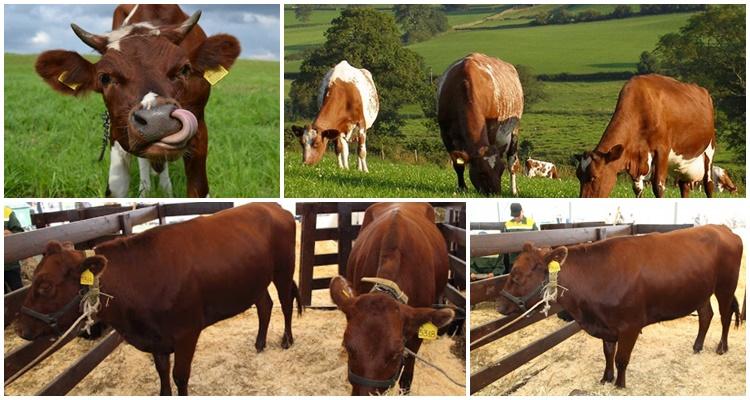
Winter feeding ration
In winter, cows are fed with hay and silage. The diet includes vegetables (apples, carrots, potatoes), compound feed, food concentrates. Concentrates can be given dry or diluted with water.Mineral supplements (salt, chalk) are required, they give bone meal, fish oil, special vitamin complexes. The amount of food depends on the sex, age, condition of the animal.
Vegetables must be clean, do not give the cow rotten or frozen food. Salt and chalk are placed in the barn in free access, next to the feeders. In severe frosts, drinking water should be warmed up. It should have a temperature of + 14-16 ° C.
Animal breeding
Pregnancy of Bestuzhev cows lasts 9 months. The heifer is covered at the age of 1.5 years. Pregnant cows are kept separately from the main herd. Cows of the Bestuzhev breed usually do not suffer from gynecological problems, but it is better to give birth to an animal under the supervision of a veterinarian. After calving, the animal must be given water to drink. Wash legs, stomach and genitals with warm water and laundry soap. It is necessary to change the bedding in the stall.
The newborn calf is allowed to be licked by the mother or wiped with burlap, watered with colostrum during the first days of life. The calf should drink up to 1.5 liters of colostrum immediately after birth. Then he is fed with colostrum 5-6 times a day, and then switched to whole milk. From 3 to 4 weeks, supplements are gradually introduced, accustoming the calf to an adult diet. In the first 2.5-3 months of life, the calf should receive 300 liters of whole milk. This will provide him with strong immunity and health. Cases of birth of 2 and even 3 calves from Bestuzhev cows have been recorded.
Diseases of the breed
Cows of the Bestuzhev breed are hardy and get sick only with mistakes in keeping. The cause of the disease is:
- trauma;
- dirt and cold in the barn;
- high humidity in the room;
- insufficient unbalanced nutrition;
- crowding of livestock, lack of physical activity;
- incorrect milking.
Animals must be vaccinated, every 4 months they are given anthelmintics. At the first sign of malaise (lethargy of the animal, decreased appetite and milk yield), the cow should be placed in a separate pen and a veterinarian should be called. The Bestuzhevskaya breed of cows has remained popular with livestock breeders for many years. She feels great in the difficult Russian climate and does not cause problems even for beginners who first decided to start their own subsidiary farm.


